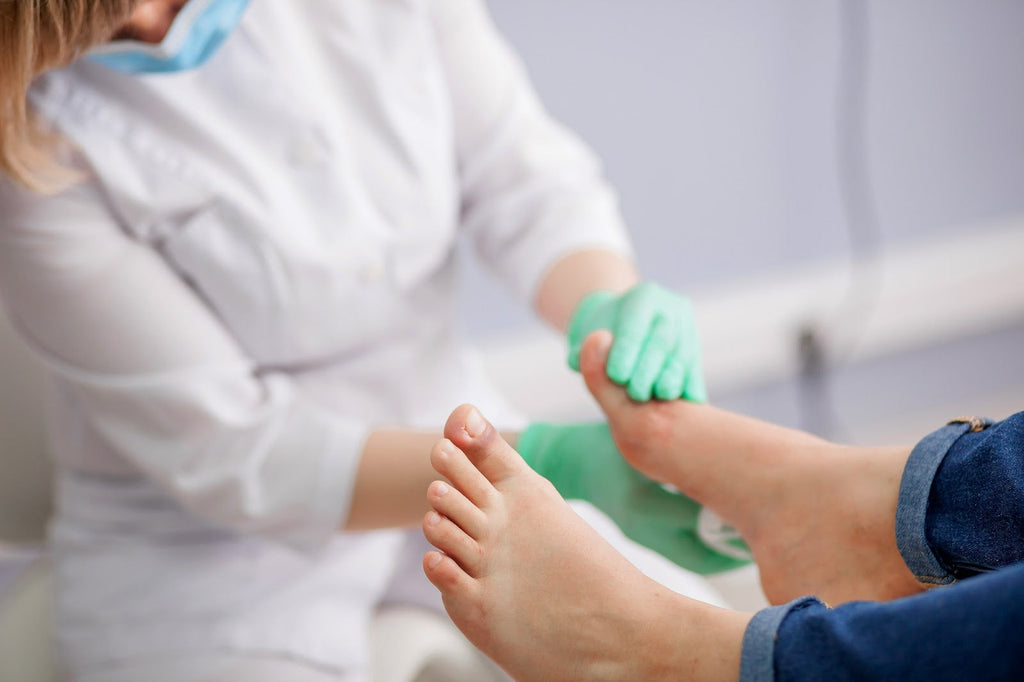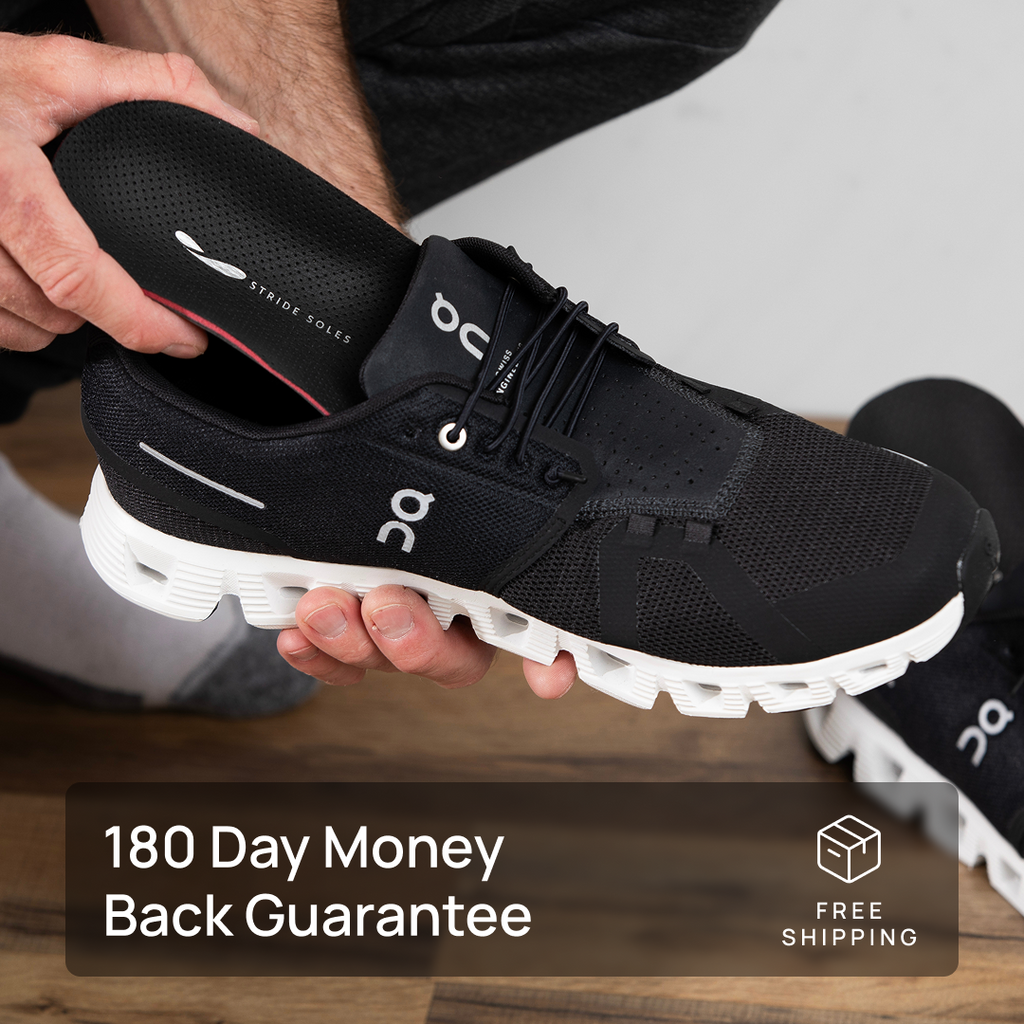What are Custom Orthotics?
Custom Orthotics are devices specially designed to help correct certain foundational issues that result in foot pain, discomfort and even mobility challenges. They achieve this in a number of ways which include:
- Helping the feet and ankles align properly
- Providing shock absorption
- Reducing pressure in certain parts of the foot
These devices are often presented as shoe inserts or insoles. It’s however important to note that all orthotics are not insoles and all insoles are not orthotics. This is not an attempt to confuse you so we will explain.
Orthotics vs Insoles
Most people know orthotics as devices that are inserted into shoes to provide relief from foot-related discomfort. These are the ones also referred to as insoles. However, not all orthotics are inserted into shoes this way. An example is the Ankle Foot Orthosis Braces which include braces that extend to the calf.
On the other hand, not all insoles qualify as orthotics. Some insoles are just soft paddings that come with your shoes or one that you can just get over the counter. These are usually for improving shoe comfort or fit.
Orthotics are used for therapeutic purposes and not just for aesthetics or comfort. When the right kind is used, they balance the rear foot to the legs, the fore foot to the back foot and efficiently contour the arch of the foot. All of these result in the proper alignment of the feet and ankle which in turn properly spreads the weight of the body, reducing pressure on some parts of the feet and by so doing enhancing balance.
Types of Orthotics
Orthotics can be classified into two main groups – custom and OTC (Over the Counter). Let’s begin with OTC or prefabricated orthotics.
Over the Counter Orthotics
These types of orthotics are mass-produced and basically available for general use. You can get these from your local drugstore or you can order them online.
OTC orthotics are only good for minor foot issues. You can use them for tired feet, mild arch discomfort and the like without seeing a Podiatric. They are not expensive so people just get them all the time.
Custom Orthotics
These are the real deal when it comes to orthotics and they fall under two categories – functional and accommodative.
Functional Orthotics
These are custom orthotics designed to correct issues that negatively impact the motion of your foot. These include overpronation (the foot rolling inward more than it should) or excessive supination (your foot rolling outward instead of inward), also known as underpronation.
These types of orthotics are mostly made from materials that are either rigid or semi-rigid because they are meant to provide support. We are talking about materials like carbon fiber or plastic.
A Podiatric will recommend functional orthotics for patients dealing with foot misalignment and its attendant conditions like shin splints, plantar fasciitis, high arch, flat feet, hammertoes and others in this category.
Accommodative Orthotics
When the foot needs to be cushioned to relief pressure from it, these types of custom orthotics are used. Given their use, they are often made from materials like gel or foam. These are materials that are soft enough to offer the needed comfort and pressure relief.
A Podiatric will often prescribe these for folks who have to spend long hours on their feet. The right type will help reduce discomfort and fatigue. They are also recommended for people with painful calluses, arthritis or diabetic foot ulcers.
Conditions that need Custom Orthotics
Flat Feet
Also known as Pes Planus, this is a situation where the foot's arch is not well-developed. It can also be described as a collapsed or low arch which causes the foot to roll inward. This is what we call "overpronation" and it leads to increased strain on the ankle and knees.
The right custom orthotics for flat feet will provide a compensative arch support which will result in the proper distribution of the body's weight, reducing the strain previously caused by the overpronation.
High Arches
This is the opposite of flat feet where the arch is under developed. The high arch in this case, makes it difficult for the feet to absorb shock like it should. When this happens, it can result in conditions like plantar fasciitis or pain in the ball of the foot (metatarsalgia).
To fix this, a specially padded orthotics for high arches can be used to absorb shock and evenly distribute body weight across the foot.
Bunions
These are results of foots shapes that were passed down from parents to the children. A good example is wide forefoot which causes a bony bump that can be quite painful. It also results in a misalignment of the toe.
Correcting or managing a case like wide forefoot with custom orthotics for bunions will require a custom orthotics that has a wide toe box. It may also need to have some support for the metatarsal because this will help reduce the pressure on the bunion. The final determination will be made by your Podiatrist.
Tendonitis
In injuries like "Achilles Tendinitis" the mobility of the ankle is significantly limited and your gait also altered. This will put more stress on the other structures of the foot and we do not want this.
To correct this situation, your Podiatrist will seek to create custom orthotics for tendonitis that will elevate the heel enough to reduce the tension on the Achilles tendons. This orthotics should be able to provide arch support and also absorb shock.
Custom Orthotics for Plantar Fasciitis
Nurses can often experience inflammation and pain in the heels from repeatedly standing for long hours. This is often the result of extended periods of pressure on the plantar fascia.
Using custom orthotics for plantar fasciitis designed to provide support for the arch and absorb shock can help manage the situation.
Custom Orthotics for Shin Splints
During runs, the legs experience repetitive impact that can lead to stress on the shin muscles and bones. This can be worsened when there's overpronation.
Fixing this with orthotics will require a custom designed one that will correct the overpronation and also stabilize the foot. The actual motion control features that will be required will be determined by the Podiatrist.
From all we've looked at above, we can see that custom orthotics for shin splints helps fix conditions in the foot and ankles by doing one or more of the following:
- Correcting alignment issues
- Redistributing pressure across the foot
- Stabilizing the foot and ankle
- Absorbing shock
- Limiting motion where necessary to protect injured tissues
Who Needs Custom Orthotics?
If you’ve read to this point then you already have a pretty good idea of who might need this device. Just to summarize, we’ll conclude with this list of people who will need orthotics.
- Athletes - To improve performance, prevent or reduce the occurrence of injuries and enhance quick recovery when and if injuries occur
- Diabetics - They can use accommodative orthotics to reduce pressure points and thereby prevent sores and ulcers.
- People suffering from foot conditions - These include aforementioned conditions like flat feet, bunions, high arch etc.
- Folks suffering from back, leg and knee pains - These pains can be caused by a misaligned foot which can be corrected with the right functional orthotics.
- People who have to stand for extended periods – Nurses and other professionals who spend a lot of time on their feet (standing or walking) can use it to increase comfort, reduce fatigue and prevent injuries.
Orthotics can help many people improve their quality of life by reducing pain, discomfort and even injuries to the feet. It’s however best to consult with a Podiatric to ensure that you really get the exact kind of orthotics that you need.




